Author: erkan
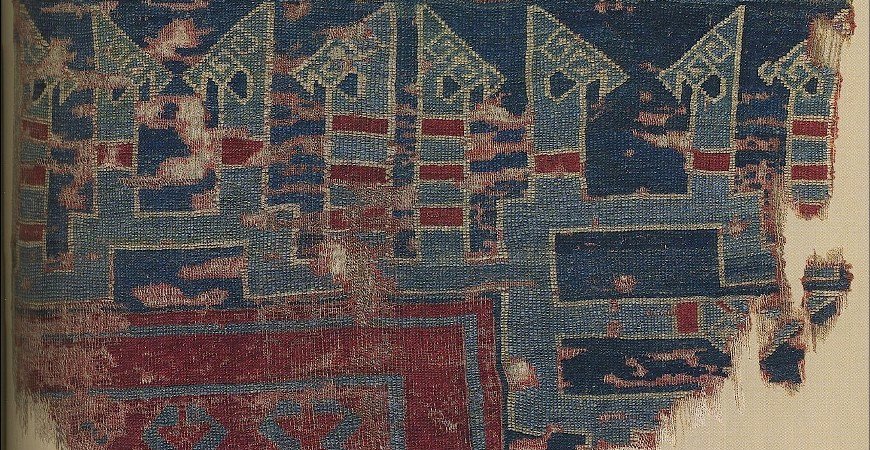
Seljuk Carpets Konya Turkey – Chapter 2
Seljuk Carpets Konya Turkey – Chapter 2,
Those in Konya Mevlana Museum were brought from the Beysehir Esrefoglu Mosque in 1930. Seyfeddin Suleyman Bey who founded the Esrefoglu Beylik in 1297 had a mosque built in his name in Beysehir and filled it with carpets. Only pieces of them remain.
The Seljuk carpets in the Stockholm National Museum were taken from Cairo in 1936, and have been established by experts as examples of those which were exported from Anatolia.
The motifs of Seljuk carpets were usually geometrical, among the most common patterns being crossing lines, symmetric hooks, and eight-pointed stars. Some of the carpets are decorated with Cufic writing around the borders. Some of them have stylized floral motifs. They were made with thick, hard thread and Gordes knots. The colors, obtained from vegetable dyes, are attractive and eye-catching. The Seljuk carpets in the Istanbul Museum of Turkish and Islamic Art and in the Konya IVIevlana Museum are famous for the most valuable carpets in the world. On one occasion it was requested that some of these Seljuk carpets be exhibited abroad. To send them required that they are insured, but their value could not be estimated and the idea of putting a symbolic price on them had certain drawbacks. In the end, it was decided not to send them.
The Ottoman art of carpet making followed on from that of the Seljuks, creating a 700-year-old traditional art of carpet weaving in Turkey. After the Seljuks, the Anatolian cities of Gordes, Kula, Ladik, Sivas, Kayseri, and Kirsehir became famous centers of carpet making. For the Ottoman palaces, carpets were woven from silk.
The first knotted carpet was woven in Anatolia during the Seljuk period, and the art developed here. These masterpieces made by Turkish craftsmen are displayed in museums all over the World.

Seljuk Carpets Konya Turkey – Chapter 1
Seljuk Carpets Konya Turkey – Chapter 1,
The art of carpet making was brought to Anatolia by the Seljuk Turks and was furthest developed in the thirteenth century in the cities of Konya, Kayseri, and Sivas. Well-known expert on carpets the German Art Historian Prof. Kurt Erdmann claims that the first knotted carpets were woven during the Seljuk period in Konya. The Seljuk Turks came to Anatolia, founded cities in which they constructed mosques, palaces, and mansions, and furnished these buildings with colorful carpets woven by Turkish craftsmen in Anatolia, The Oguz clans of Anatolia who mainly lived a nomadic life wove kilims and furnished their tents with them, but they also valued the carpets made in the cities. Travelers of the thirteenth century said that the carpets produced in Anatolia were the most beautiful in the world and that they were exported to other countries. Marco Polo and his uncle who traveled to China in 1271 – 1272 said that the carpets made in the larger cities of the Seljuk The state were the most beautiful in the world. And they must have been beautiful to impress a traveler who had seen every country from Europe to China. At the beginning of the seventeenth century, Ibni Battuta traveled to Anatolia and recorded that carpets were being exported to several Islamic countries.
Only a few examples of these early Seljuk carpets and kilims have survived up to the present day. There are eight in the Istanbul Museum of Turkish and Islamic Art, three in the Tomb of Mevlana in Konya and seven in the Stockholm National Museum. Of these eighteen carpets three of them are complete and of the others, only pieces remain.
Those in the Istanbul Museum of Turkish and Islamic Art were taken from the Alaeddin Mosque in Konya in 1914. The Seljuk Sultan Alaeddin Keykubad I had this mosque built in 1221, and the sultans which followed him fill it with lamps, candlesticks, and lecterns and had carpets woven especially for this mosque. In the 750 years which have passed since then, these carpets have been worn out and thrown away leaving only three complete and five in pieces.
You can continue to find more details about Seljuk Carpets Konya Turkey in Chapter 2.
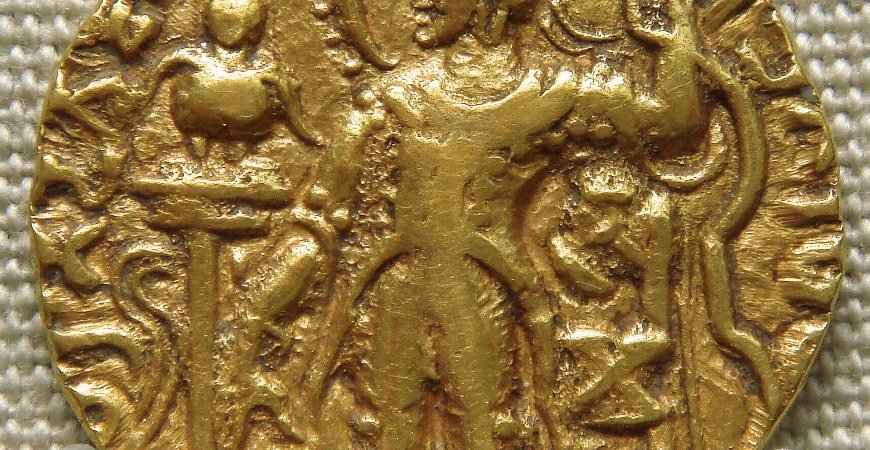
Antique Coins In Istanbul Archaeological Museum
Antique Coins In Istanbul Archaeological Museum,
The minting of coins was first invented in Anatolia 2,600 years ago, according to historians. The Lydians who established a wealthy state in Western Anatolia in 640 BG were the first people to produce metal coins made of the electron, an alloy of silver and gold. Until then trade had been carried out either ‘with metal ingots or by barter. Advanced civilizations such as the ancient Egyptians, Sumerians, Assyrians, and Hittites used metal ore with which to trade. These metal ores were of particular weights and were used as money for large purchases and could be exchanged for their weight in copper, tin, lead, and silver in small purchases. When the Lydians first produced their small round coins decorated with a plant and animal motif trading was greatly facilitated. Later the famous Lydian Croesus had both golds on silver coins minted between 561 and 546 BC and the duty of minting money became traditionally that of the Kings. The use of money spread from Anatolia to the Mediterranean countries, and every state began to mint gold, silver and copper coins, The coins made during the period of the Macedonian King Alexander the Great depicted either the King or the gods. During the periods of the Greeks, Romans, and Byzantines both kings and cities produced coins, each of a distinctive design, whose value was determined according to their quality. Later still the Islamic states considered money to be a symbol of sovereignty, and every ruler who came to the throne had money minted which carried his name.
Several museums in the world have valuable collections of coins, one of these being in the Numismatic section of the Biblioteque Nationale in Paris. In Turkey, every museum has a small coin collection, but the Numismatic Section in the Istanbul Archaeological Museum is among the richest in the world, containing over 250,000 coins made of various different metals. Just after the museum ‘was established the coins were divided into those dating from the pre-Islamic and those dating from the Islamic period. Most important among these are the pre-Islamic Lydian coins and the Classic and Hellenistic coins. This section also includes over fifty thousand Roman and over sixty thousand Byzantine coins made of gold, silver, and copper. In the last fifty years, the collections have grown by means of donations, purchases and treasure troves. For example, a treasure trove found at Buyukada in 1930 included 414 gold coins from the fourth century BC, and that at Cerrahpasa found in 1953 contained 2,560 gold Byzantine coins dating from the twelfth century BC.
The most significant and extensive part of the Numismatic Section in Istanbul Archaeological Museum is the collection of Islamic period coins, which experts say is the best in the world. The first Islamic period coin was minted during the time of the Emeci Caliph Abdulmelik in Damascus, and in time all the Islamic states began to mint coins. The Early Ottoman coins from the periods of Orhan Gazi, Murad II and Yildirim Beyazid (Istanbul Archaeological Museum Coin Section) the collection includes gold, silver and copper coins from over a hundred Islamic States, arranged according to period. Each coin has been studied and inventoried, and a catalog prepared. Most of these coins were obtained from treasure troves, and include coins of the Emevi, Abbasi, the North African Islamic states, the Asian Islamic states, the Seljuks, the Anatolian Principalities and the Ottoman period, and throw light on several little-known periods of history. The collection also includes Islamic period seals, Ottoman medals and medallions and paper money from the last Ottoman period. There is also a complete collection of coins and paper money from the Turkish Republic.
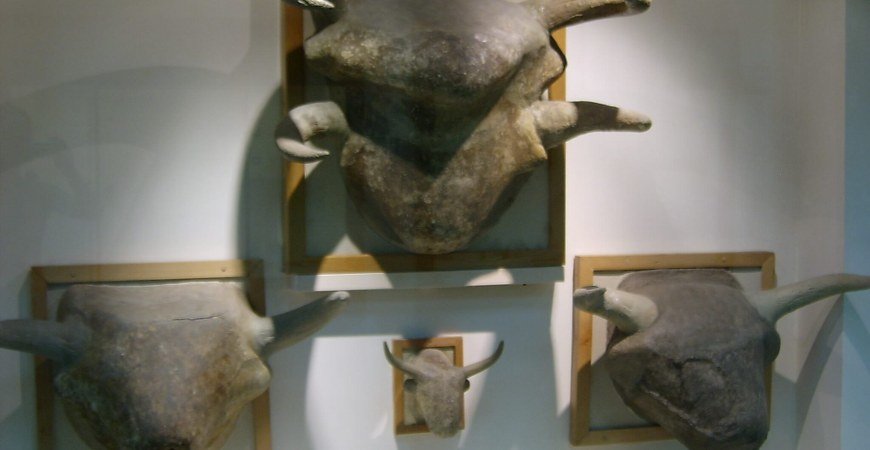
Old Catalhoyuk Hattusa Civilization – Chapter 2
Old Catalhoyuk Hattusa Civilization – Chapter 2,
Their houses which were generally joined one to another were entered by steps going down into the houses from the roofs. They had ovens. Because they had not yet discovered metal they had made weapons out of obsidian. Stone and clay figurines of pregnant women were found, making it clear that the core of their belief was in the Mother Goddess. And heads of bulls were found in their temples which must also have had some religious significance. No one can deny the beauty and delicacy of their painted pots and bowls decorated with geometric designs. During the years of the Catalhoyuk excavations, I followed the studies closely as Director of Konya Museum. I will never forget the day when the grave of the owner of the house was opened inside a brick room. They were working painstakingly with needles and we were standing beside them looking on. Beside the skeleton in the grave, they discovered a shining hand mirror made of polished black obsidian. It was clear that it was the grave of a woman, Even when they have died women still cannot do without a mirror. And what was really interesting was that on the right side of the skeleton was a small clay pot containing dark red paint which must have been the woman’s rouge and lipstick. Which shows that women were the same ten thousand years ago as they are today. So many necklaces made of painted stones and bones were found in the Catalhoyuk excavations that those who saw them were left astonished. But to cut a long story short the Catalhoyuk excavations went on until 1965, and the findings were exhibited in the main rooms of the Ankara Museum of Anatolian Civilisations, making up a nine and ten-thousand-year-old treasury. Such an archaeological discovery has not been seen in any other country in the world.
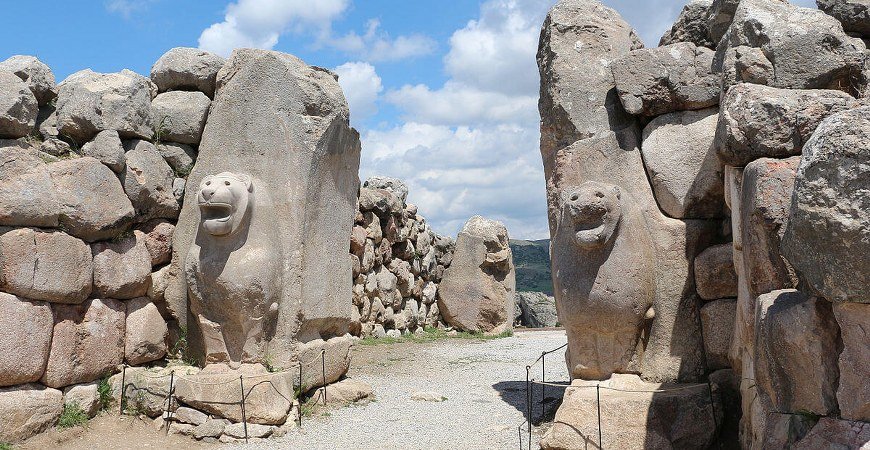
Old Hattusa Catalhoyuk Civilization – Chapter 1
Old Hattusa Catalhoyuk Civilization – Chapter 1,
Everything began before 1960. Villagers began to remove clay figurines and pottery with black and brown lines on a red or buff-colored background from the mound near the village of Hacilar in Burdur. When these got into the hands of antique collectors interest was aroused and it was discovered that this was the site of a previously undiscovered Anatolian civilization. As a result, official excavations began in 1958 and the findings proved to be astounding. A remarkable Polished Stone Civilisation had lived in this region of Anatolia during the Neolithic Age five to six thousand years before Christ. It had not been previously realized that the Anatolian Neolithic Age had extended so far back into the past. A few years later a new mound was discovered in Central Anatolia and excavations began. This was Catalhoyuk. Catalhoyuk was a broad mound 42 km. southeast of ‘Konya between the towns of Kucukkoy and Karkin. The pieces of pottery found at the top of the mound drew the attention of archaeologists and the first stage of excavations produced extraordinary results. Here were the remains of a Neolithic settlement of a completely unknown civilization yet older than that at Hacilar. This civilization had not yet discovered writing and it was impossible to identify its people. However, they were not only the most advanced civilization of those times in Anatolia but of the whole world. They were the harbingers of civilization. The findings from Catalhoyuk dated back to seven and eight thousand years before Christ, and this ten-thousand-year-old civilization had left houses, temples, palaces, food, a status which they had worshiped, ornaments, bowls, and weapons. Their society was undeniably civilized. The white plastered walls made of sun-dried bricks were decorated with frescoes depicting people and animals.
Please continue to find more details about Old Hattusa Catalhoyuk Civilisation in Chapter 2.
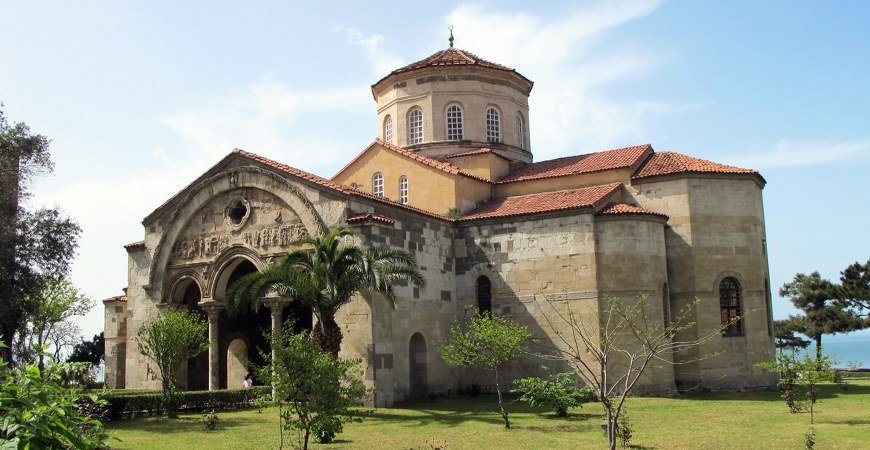
The Museums of Trabzon and Sinop in Turkey
The Museums of Trabzon and Sinop,
Trabzon Ataturk House:
Ataturk House is in the Soguksu district of Trabzon surrounded by a large garden. The House was built in 1913 and has four stories. The House was bought by the Trabzon Municipality during the Republican period and presented to Ataturk.
Ataturk came to Trabzon three times: On September 15, 1924, on November 27, 1930, and on June 10, 1937, and stayed in this house. After Ataturk’s death, Trabzon Municipality organized the House as a museum and opened it to the public. At the entrance is displayed the text of the speech which Ataturk made in Trabzon on September 15, 1924. The small room on the right contains photographs of Ataturk’s life and his visits to Trabzon, and the room leading off it contains the armchairs and sofas which he used. The dining room is also on this floor. On the upper floor are Ataturk’s bedroom, his bathroom, study and aide de camp rooms.
Trabzon Saint Sophia Museum:
Trabzon Saint Sophia Church is both a museum and a monument of unique architectural value. The church was rebuilt in the Byzantine period by Manuel I ‘Kommenos in 1245. During the Ottoman period, it was turned into a mosque. The building is in the shape of a cross and covered with a dome. There are two colonnades to the west, north, and south. Inside the church are frescoes depicting scenes from the Bible and in the dome is a statue of Jesus.
In the church and the garden are also displayed masonry from the Roman and Byzantine periods.
SINOP MUSEUM
First steps to found a museum in Sinop were taken in 1921. Historical works from the region were stored first in Sinop Primary School, then in 1933 moved to the Aladdin Medrese a Seljuk period building. In 1941 the works were exhibited and the Medrese opened to the public as a museum. The museum gradually became short of space as the number of works in the museum increased from 350 to 1500 and gained a coin collection of 560, and in 1967 construction of a new museum building began. The museum was completed in 1970 and works found in excavations in Sinop and previously taken to Ankara were brought balk and displayed in the new museum building. Sinop
Museum contains the following sections
Archaeological works: The works in this section “have been arranged in chronological order. There are clay, glass, stone, and metal objects and ceramics from the Hittite, Hellenistic, Phrygian, Roman and Byzantine periods and Prehistoric objects. The room also contains a small collection of coins.
Ethnographic Works: This section contains clothing, ornaments, kitchen utensils, and gold and silver inlaid weapons from the region.
Carpets and Writing section: This section contains examples of XVI and XVIII century Ledik-Gordes carpets, handwritten inscription’s, gilded manuscripts of the Koran and lecterns inlaid with ‘mother of pearl. The courtyard of the museum contains masonry, offering stones, sarcophagi, and inscriptions.
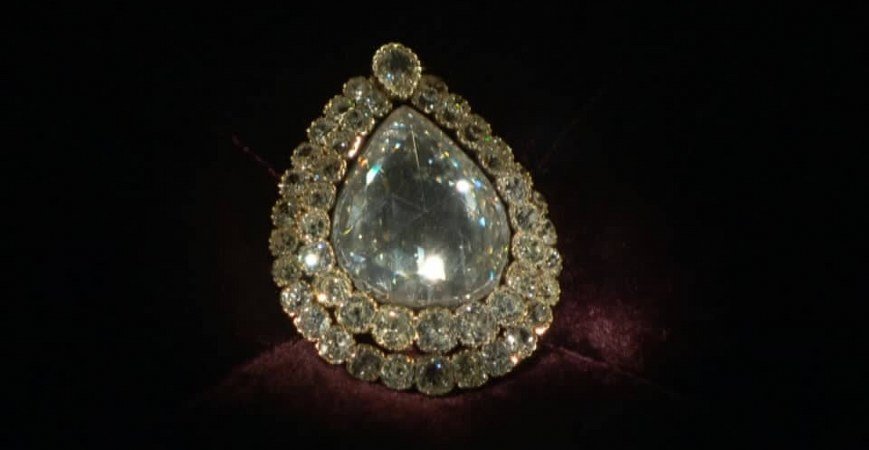
The Spoon Diamond in Istanbul Topkapi Palace Museum – Chapter 2
The Spoon Diamond in Istanbul Topkapi Palace Museum – Chapter 2,
Experts investigated the subject, and in recent years came up with a new story, which goes as follows: In 1774 a French officer called Pigot bought a diamond from the Maharaja of Madras in India and brought it to France. After changing hands several times it was offered for sale, and bought by Napoleon’s mother. She Wore it for a long time, but when Napoleon was sent into exile his elderly mother sold the diamond to help her son. At that time there was a man called Tepedelenli All Pasha in France who bought the diamond for 150 thousand pieces of gold. Tepedelenli Ali Pasha was killed when there was an uprising against Sultan Mahmud the Second, his wealth was seized by the state, and everything carried to the Ottoman treasury. Thus the diamond bought from Napoleon’s mother which later won fame with the name Spoon Diamond entered the treasury. It is known that the diamond is known as the Pigot diamond in France, and which was bought by Tepedelenli Ali Pasha, was 86 karats. The Spoon Diamond in Topkapi Palace today is also 86 karats… The Pigot diamond can be none other than the Spoon Diamond in Topkapi Palace. Among the 22 diamonds which are famous in the world is the ‘Koh-i Nur’ of 191 karats, which was also found in India. Today it is in the treasury of the Queen of England. The ‘Derya-Nur’ or ‘Sea of Light’ diamond is today kept in the Iranian National Bank. The ‘Southern Star’ diamond and the Pigot or Spoon diamond in Topkapi are among these 22 world famous diamonds. Experts are of the opinion that the two rows of 49 brilliants surrounding the diamond were placed there much later on, by either Tepedelenli All Pasha or Sultan Mahmud the Second. These brilliants add to the value of the Spoon Diamond by as much again. The Spoon Diamond leaves all the gold, silver, rubies, and emeralds in the Topkapi Palace Treasury in the shade. The Spoon Diamond is a masterpiece of beauty, which decorated favorites, Queens, and Sultan mothers attracting looks of wonder, and today it smiles at visitors from its showcase in which it stands alone… Like a bouquet of light.

The Spoon Diamond in Topkapi Palace Museum Istanbul – Chapter 1
The Spoon Diamond in Topkapi Palace Museum Istanbul – Chapter 1,
The Treasury at Topkapi Palace is one of the most famous treasures in the whole world. It is impossible to count or value the maces, daggers, boxes, book bindings, candlesticks, rings, and ornaments, decorated with diamonds, emeralds, rubies, brilliants, topaz, turquoise and other precious stones. By the side of these glittering stones, gold and silver seem pale. And each one of these objects worked with the finest craftsmanship, has a separate value as a souvenir of the past each having its own story. These diamond aigrettes stopped the crown of many sultans; that emerald dagger was used to challenge who knows how many people. And what about these rings, earrings, and medallions. Looking with misty eyes at these treasures of the past one cannot help getting carried away with memories of a magnificent past. And among all these riches is a treasure which dazzles the eyes with its light and arrogant beauty, enthroned in a case all by itself. It is known as the Spoon Diamond, a clear, oval-shaped stone… Around it is 49 brilliants, resembling the full moon lighting up the sky among the stars.
Various stories are told about the Spoon Diamond. According to one of these, one day a poor fisherman was idly wandering along the shore near Yenikapi in Istanbul when he found a shining stone among the litter. He turned it around but could not work out what it was. After carrying it around in his pocket for a few days he went to the jewelers market and entered the first jewelers that he saw. The jeweler took a look at the stone and said carelessly, “It’s just a piece of glass if you like you can keep it if you like I’ll give you three spoons for it, since you have come so far, and make it worth your trouble”. What could the poor fisherman do with this piece of glass? And the jeweler was sorry for him and offering him three spoons. Very well, he said and took the spoons, laying down a fortune in their place… That is why it is called the Spoon Diamond people say. According to another story, the diamond was found by a spoon seller, or the diamond resembles a spoon and that is why it got that name. Until recently it was still not known how and by whom the diamond was brought to Topkapi Palace. In the museum records, it says that Sultan Mehmed the Fourth had a ring stone called the Spoon Diamond, but the weight of that stone was only 10 – 12 grams together with the gold setting, which is far smaller than our Spoon Diamond… In that case, where did the Spoon Diamond come from?
You will continue to find more history about The Spoon Diamon in Topkapi Palace Museum Istanbul in Chapter 2.

The Lake of Nar and Gullu Mountain in Cappadocia Turkey
The Lake of Nar and Gullu Mountain in Cappadocia Turkey,
The Lake of Nar (Nar Golu)
The Lake of Nar is situated in a remote (30 km. from Derinkuyu and Ihlara) and deserted valley surrounded by hills. Its surface lies 70 m. below the surface of the plain, its own depth is not known. Hot water surging out from the south and north shores of the lake is supposed to be useful in treating rheumatism and many people from neighboring villages come here for a cure. The hills around the lake are literally filled with innumerable churches. One has four stories, all have frescoes which unfortunately are covered with the soot and smoke from the shepherds’ fires. Since many of the churches are not easily accessible, being situated on high rocks, they have not yet been investigated and the area is not open for tourism.
Gullu Mountain (Gullu Dagi)
Gullu Dagi is on Mount Melendiz, which is 70 km. from Nigde and 20 km. to the southwest of Derinkuyu. This site, which lies near the village of KOmOrci.) of GOlcuk, contains the ruins fo a late Hittite city of the 8th century B.C. It was discovered by accident when the rains exposed the statue of two lions. Excavations were first started in 1934 by professor Demzi Oguz Arik, but were interrupted for various reasons until 1968, at which date work at the site was resumed under the direction of Mr. Burhan Tezcan, Assistant Director General of Museums and Antiouities. The foundations of the building were reached after long excavations and also some gates have been partially unearthed. Various ceramic objets decorated with animal figures were discovered in the recent excavations. The statues of the lions and some of the ceramic objects are now in the museums of Kayseri and Nigde. Like the ruins at Alacahoyuk, Bogazkale, Karaoglan, Dundartepe and Karahoyuk (at Konya), also the Gullu dagi ruins show signs of a fire.
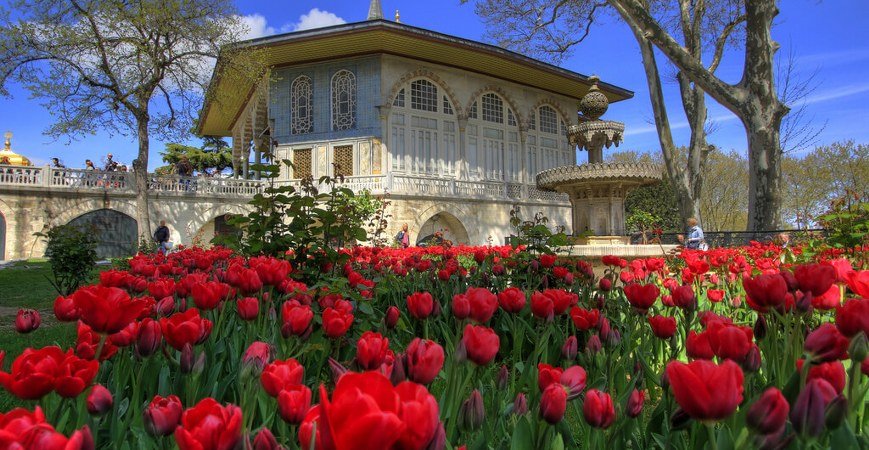
The Flowered Shield Istanbul Topkapi Palace – Chapter 3
The Flowered Shield Istanbul Topkapi Palace – Chapter 3,
The Austrian historian Hammer tells the following story about one of the Sultan’s campaigns: Sultan Suleyman was crossing the Hungarian plains. The plains were covered from one end to the other with vineyards and it was a vintage season. It was hot and the army was ordered to form single lines and cross through the vineyards without crushing a single grape, without doing any damage at all. The units proceeded in single file while the villagers who owned vineyards and who had fled to the hills around in fear watched the progress of this magnificent army in anxiety and surprise. Towards noon the trumpeters began to play. This was the order for an hour’s rest when everyone would open their packs and eat. Their mouths were dry with thirst. They picked the swinging bunches of large juicy grapes and ate them with their dry bread. An hour later the trumpet sounded again to indicate that the break was over. The villagers watching from the hills were very upset. What use would their vineyards be after such a huge army had passed through them? But when they descended after the army had passed, they found that not a single shoot or leaf had been damaged, and that where bunches of grapes had been picked purses of shining gold coins had been tied on the vines in payment, according to the current price for grapes, so as not to commit any sin even while on campaign, and bring down the curses of the poor upon them. Hammer writes this anecdote as an example of how Sultan Suleyman the Law Giver brought justice to Europe and to illustrate the extent of the discipline of his army. The shield of such a period, decorated with flowers of many colors, is certainly a work of art… There are other shields similar to this one in Topkapi Palace Museum. dated at the 16th century from the classic carnation and tulip motifs upon them. In later centuries with the rise of firearms the use of the shield diminished. Those of artistic value have been preserved until the present day in the Palace Treasury.